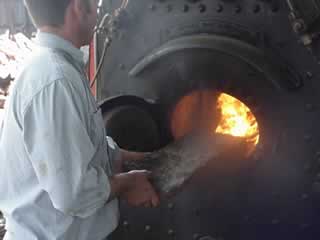"Energy can not be created or destroyed" This is called the law of conservation of energy. The amount of energy in the Universe is finite. Although we can not create energy we can change its form. For example burning wood changes the chemical energy, stored in the molecules of the wood, into heat and light energies. This chemical energy originated as solar energy and converted into chemical potential energy by plants in a process called photosynthesis. In fact all the energy on Earth originated from the Sun.
We can not see energy, but we can recognize objects that contain it. Generally speaking , energy is the ability to move an object against an opposing force. It can also be described as the ability to do work.


Some examples include:.
-A moving car has energy (kinetic) it can push itself along the road overcoming the forces of friction and air resistance.
-Petrol in the car has stored energy. It supplies energy to the engine to push the car along the road.
-A book resting on the top shelf has stored energy. It can fall and cause something else to move.
Our world is full of every day examples where energy is transformed from one form into another. Energy can be put into objects to make them move (kinetic) or increase in temperature (heat energy). Examples of different forms of energy include:
-Chemical potential energy . This type of energy is stored in the form of chemicals. Food and petrol are examples of substances with chemical potential energy. The energy in the chemicals is released as heat to drive our cars and warm our bodies.
-Gravitational potential energy. This type of energy is stored in objects that are high off the ground. The higher off the ground and the heavier the object the more energy it possess.
-Kinetic energy. Any moving object has kinetic energy. The faster an object travels the more kinetic energy it has. Also the heavier the object the more kinetic energy it has. An elephant raveling at 30km/hr can do more damage than a mouse traveling at the same speed. A mouse traveling at 10,000km/hr however, can impart more energy on impact than an elephant traveling at 1km/hr
Click here for a quick lesson on energy
and its conversion from one form to another.
Click here for some simple exercises
involving conversion of energy from one form to an other.